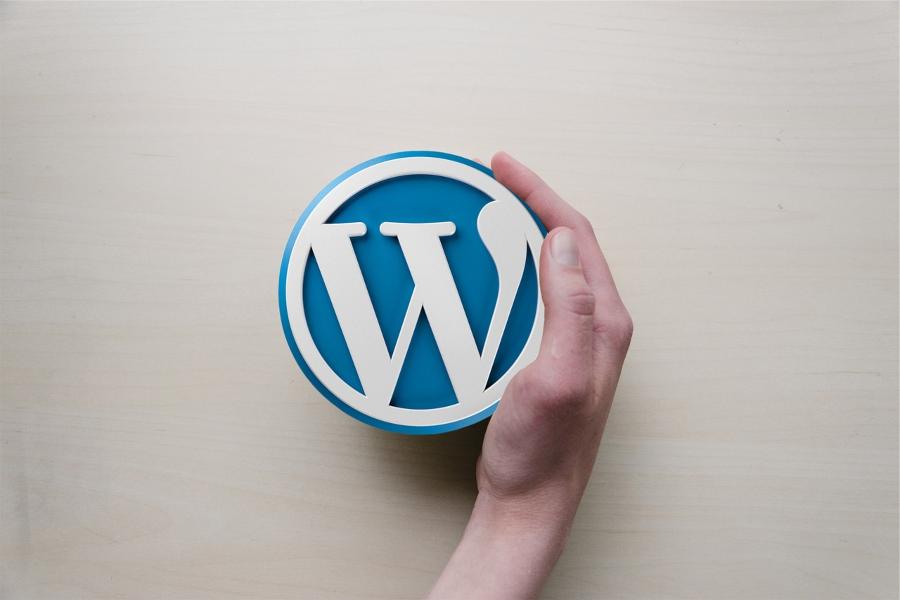What Is PHP in WordPress? Unlocking Its Power for Your Website

When you visit a WordPress website, you see a seamless blend of design and functionality. Behind the scenes, PHP plays a crucial role in making this possible. So, what is PHP in WordPress? PHP, which stands for Hypertext Preprocessor, is the core programming language that powers WordPress. It dynamically generates your web pages by interacting with databases and templates, making your website interactive and customizable. Unlike static HTML sites, WordPress uses PHP to build content on the fly, enabling features like themes, plugins, and user management.
Understanding what is PHP in WordPress is essential if you want to customize your site beyond just installing themes and plugins. Whether you’re a developer, a site owner, or a curious enthusiast, knowing PHP helps you troubleshoot issues, optimize your site, and even create custom functionality. This article will dive deep into PHP, why it matters in WordPress, how it works, and practical insights into leveraging PHP for your website. With clear explanations and easy-to-follow examples, you’ll gain a firm grasp of PHP’s role in WordPress and how to use it effectively.
What Is PHP in WordPress?
PHP in WordPress is the server-side scripting language that generates dynamic content for your website. It powers WordPress core functions, handles database interactions, and enables themes and plugins to work. PHP transforms templates and data into the HTML pages users see, making WordPress flexible and customizable.
How PHP Powers WordPress Unlocking Dynamic and Interactive Websites
PHP is the core programming language that powers WordPress, enabling it to create dynamic and interactive websites instead of just static pages. As an open-source scripting language designed specifically for web development, PHP plays a crucial role in how WordPress functions. When a visitor loads a page on a WordPress site, PHP retrieves content from the database, processes it, and then generates the HTML that the browser displays. This dynamic process allows WordPress to deliver up-to-date content, personalized views, and user-specific data in real time.
PHP is essential because it allows themes and plugins to extend WordPress’s features by running scripts that modify layouts, add forms, or integrate third-party tools. It also manages important backend tasks such as user authentication, form handling, and content management. Since PHP runs on the server, it keeps your website secure by only sending the final output to users, while performing complex operations behind the scenes.
Understanding PHP’s role in WordPress is important for troubleshooting, customizing, and enhancing your site. It makes WordPress flexible, powerful, and capable of supporting everything from simple blogs to advanced ecommerce platforms.
How Does PHP Work Within WordPress?
PHP is the backbone of the entire WordPress core. The core software itself is built almost entirely using PHP, which means essential functions like creating posts, managing users, and loading content are all powered by PHP scripts. Whenever a visitor requests a page on a WordPress site, PHP processes that request on the server before sending the result to the browser.
PHP’s Interaction With the Database
WordPress uses PHP to communicate with its database, typically MySQL or MariaDB. When a page loads, PHP queries the database to fetch, update, or delete the required content. For example, when someone views a blog post, PHP retrieves the post’s data from the database and formats it properly for display. This interaction ensures that visitors always see the most current content.
The Template System Powered by PHP
WordPress relies on PHP template files to determine how content is displayed on the site. These template files contain PHP code that dynamically inserts content such as post titles, images, and metadata into the layout. This system allows the website’s appearance to change based on content and user settings without needing static HTML pages.
PHP in Plugins and Themes
Both plugins and themes are built using PHP to extend and customize WordPress functionality. Plugins run PHP scripts to add new features like contact forms, SEO enhancements, or ecommerce tools. Similarly, themes consist of PHP files that control the visual design and layout, dynamically generating HTML based on the website’s content and configuration. Through PHP, WordPress remains highly flexible and customizable.
What Are the Key PHP Files in WordPress?
Understanding the main PHP files in WordPress is essential to grasp how your website is constructed and functions. Each of these files contains PHP code that plays a specific role in assembling your site dynamically, allowing developers to customize appearance and behavior.
- index.php: This is the fallback template file used to display pages when no other specific template matches the request. It serves as the default page loader.
- wp-config.php: This critical file holds your database connection details and other essential site configurations that enable WordPress to communicate with your database.
- functions.php: Located within your active theme folder, this file allows you to add custom PHP code snippets to modify or extend your site’s functionality without altering core files.
- header.php: Controls the top section of your website, including metadata, site title, stylesheets, and navigation menus.
- footer.php: Manages the bottom portion of your site, typically containing footer menus, credits, and scripts.
- single.php: Template responsible for displaying individual blog posts in a formatted manner.
- page.php: Used to display static pages like About or Contact pages.
- archive.php: Handles the display of multiple posts, such as those grouped by category, tag, or date.
- comments.php: Controls how comments are displayed and submitted on posts and pages.
By working together, these PHP files build the complete dynamic structure of a WordPress site, providing flexibility for customization and functionality.
When and Why Should You Learn PHP in WordPress?
Learning PHP for WordPress is valuable if you want greater control over your website’s design and functionality. While beginners often rely on themes and plugins, they soon find that without coding, customization options are limited. By learning PHP, you can customize themes beyond default settings and create or modify plugins to meet specific needs. It also enables you to quickly fix bugs and compatibility issues, improving your site’s reliability. Additionally, optimizing PHP code can boost site performance, and PHP skills allow you to integrate external APIs or custom scripts seamlessly.
PHP knowledge is especially important for developers building custom WordPress solutions for clients or businesses requiring unique features. Understanding PHP also helps you grasp WordPress’s system architecture, making debugging and maintenance much easier. Since WordPress powers over 40% of websites worldwide, having PHP skills in this context greatly enhances your career opportunities and market value. Overall, learning PHP opens the door to advanced customization and better website management.
How to Use PHP Safely in WordPress Development
Using PHP safely in WordPress development is crucial to maintaining a secure and stable website. Following best practices helps prevent errors, security risks, and compatibility issues.
- Use Child Themes Instead of Editing Core Files: Never modify the core WordPress PHP files directly, as doing so can cause issues during updates and compromise your site’s stability. Instead, use child themes to safely override and customize PHP template files. This approach keeps your changes separate from the core, ensuring they remain intact after updates.
- Sanitize and Validate Inputs: Always sanitize and validate any user input in your PHP code. This practice protects your site against common security threats such as SQL injection and cross-site scripting (XSS). WordPress provides built-in functions like sanitize_text_field() and esc_html() that help secure data before processing or displaying it.
- Use WordPress APIs: Whenever possible, rely on WordPress’s native functions and APIs instead of writing raw PHP code from scratch. These APIs are designed to maintain compatibility, improve security, and simplify complex tasks, making your development more reliable and easier to maintain.
- Keep PHP Updated: Make sure your server runs the latest PHP version supported by WordPress. Newer PHP versions include important security patches and performance improvements that help keep your site secure and fast.
- Use Debugging Tools: Enable debugging tools like WP_DEBUG and review PHP error logs to identify and fix issues during development. These tools provide valuable insights that can prevent errors from reaching your live site.
- Avoid PHP Conflicts: Be cautious of conflicts that can arise from multiple plugins or themes trying to declare the same functions or variables. Check for such conflicts regularly and follow best practices like using unique function names and prefixes to avoid redeclaration errors.
Final Thoughts
To sum up, grasping the role of PHP in WordPress is crucial for anyone serious about creating, customizing, or managing a website on this platform. PHP is the fundamental language that powers WordPress’s dynamic features, allowing sites to be flexible, interactive, and highly customizable. This capability is what sets WordPress apart from static websites and makes it ideal for a wide range of projects.
Whether you are a newcomer or a seasoned developer, gaining proficiency in PHP unlocks greater control over your site’s functionality and design. By mastering PHP, you can build tailored, efficient, and innovative websites that meet your specific goals, making your WordPress experience far more rewarding and effective.
FAQ’s
What is PHP in WordPress used for?
PHP in WordPress generates dynamic web pages by retrieving data from the database and rendering it in HTML format for visitors.
Do I need to know PHP to use WordPress?
WordPress is user-friendly for non-coders, but knowing PHP helps customize and extend your site beyond basic features.
Can I edit PHP files in WordPress?
Yes, but it’s best to use child themes or plugins for customization to avoid losing changes during updates.
Is PHP secure for WordPress?
Yes, when appropriately written using WordPress coding standards and security best practices, PHP is secure.
How can I learn PHP for WordPress development?
Start with basic PHP tutorials, then explore WordPress-specific PHP functions and APIs through official WordPress developer resources.
What PHP version does WordPress require?
WordPress recommends PHP 7.4 or higher for optimal performance and security.
